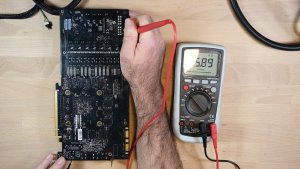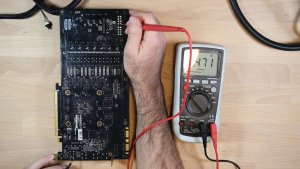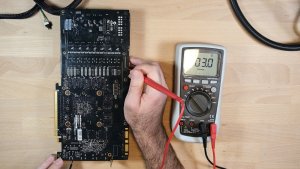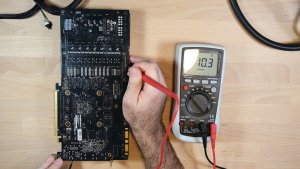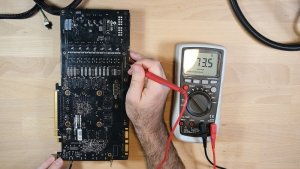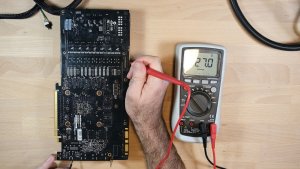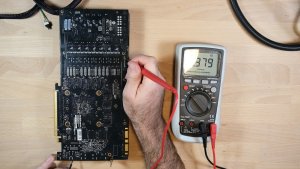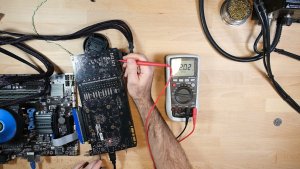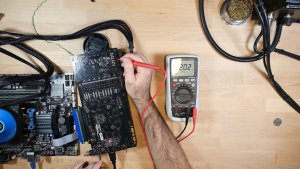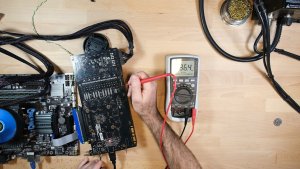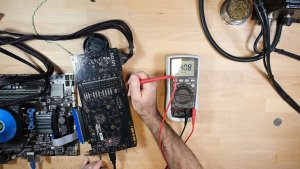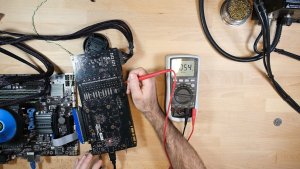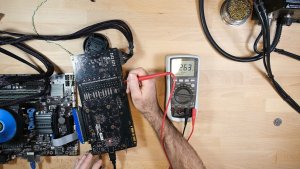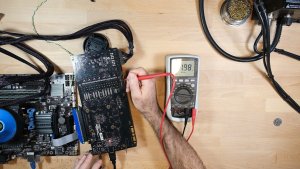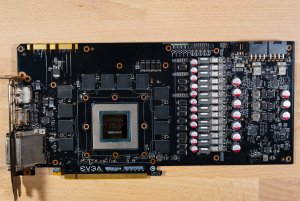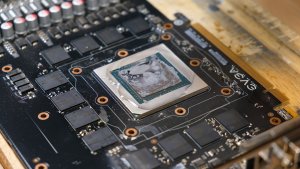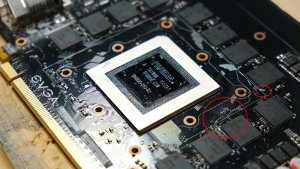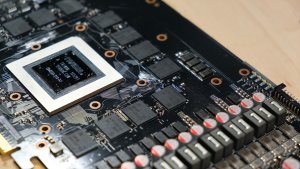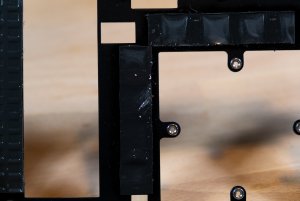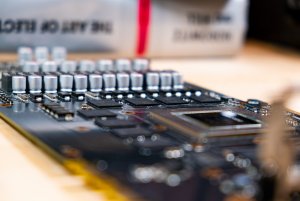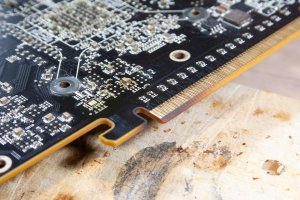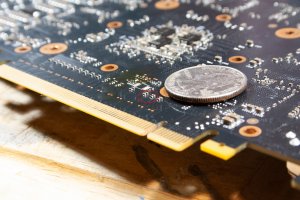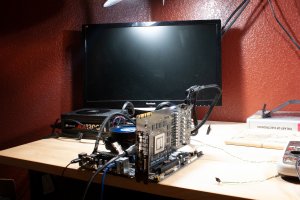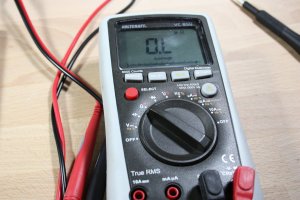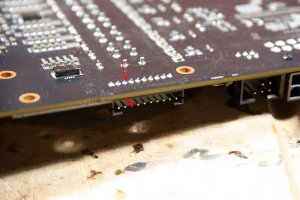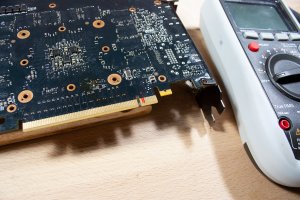I want to start this thread by first thanking the [H] member who sent this card to me at his own cost, "no strings," as he put it. It sounded like he (or she? I'm not sure) wanted to remain anonymous, so I won't tag him here, but I hope you'll all join me in thanking him for sending it to me. I'm sure he could have sold this on ebay for a few bucks, but instead, he chose to send it to me so we can all learn something. I know I speak for all of us when I say I'm grateful, but I hope you'll do so as well. Anyway, because this was so generously donated by an [H] member, I'm working on the thread first, and I'll upload the video to Youtube later. I suspect most of us here prefer to read, rather than watch, anyway.
The card in question is an EVGA GeForce 980 Ti "Classified," a product of the uniquely famous Ilya 'TiN' Tsemenko and Vince 'Kingpin' Lucido duo at EVGA. This was one of the best iterations of the 980 Ti that you could get at the time, and as we'll see later, its very well made, with a lot of features aimed at overclockers (arguably the "real" hardware enthusiasts) that gamers shouldn't be that eager to pay extra for. It's similar to the Kingpin edition ("KPE" as Kingpin likes to call it), and you can see they're closely related if you look at them side by side. The KPE really goes ham with the overclocking features, whereas they appear to have been a bit more reasonable with this card. One thing I think is really neat about this card is that even now, when Nvidia has made it extra difficult, EVGA still really leans in to the extreme overclocker crowd, and not only employs TiN and Kingpin for the purpose of making special cards like this, but allows them to be accessible to the community in ways that none of the other board vendors do. MSI and Galax used to have similar product lines (called "Lightning" and "Hall of Fame" respectively), but it's really only EVGA that's still obviously putting in this much effort. Furthermore, TiN, at least, is a shockingly accessible person. He apparently owns and operates Xdevs.com, where he makes similar content to mine, and will sometimes respond if you reach out to him and ask a question.
Here's the card as it arrived. It clearly got used, as it's got some dust in the fans, and the heatsink fasteners show some evidence of having been removed at some point, but it doesn't appear to have been abused, or used for GPU mining in an outdoor shed or anything. Frankly, this is exactly what I would expect this card to look like at this point in its life, having been owned by the sort of person it's intended for. It even still has the peely-film on it.
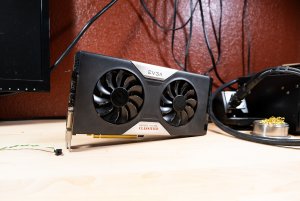
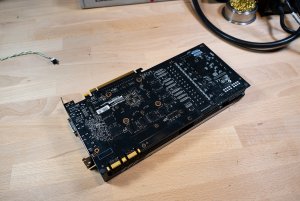
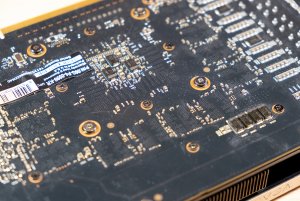
The BIOS switch was in the liquid nitrogen mode when it arrived. Giggity.
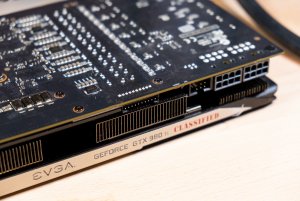
Those headers are among the things that make this card special. The one on the left is what EVGA calls the "Probe-it" header, which consists of a series of voltage read points. With the exception of the 5V rail, every one of the voltage rails on the card is present there. There is a wiring harness that plugs into this; I'm not sure if it comes with the card, but we don't happen to have it. For our purposes, we can just probe the pins directly, so that's no biggie. For competitive overclocking, you'd want that wiring harness.
The other header is a connector for what EVGA calls an "EVBot," which is an external controller gizmo that allows real time control of the card's voltage rails. EVGA doesn't seem to make them anymore, but it has some advantages over using software that runs on the host system, and it's a cool feature that they include on this card.
A visual inspection of the card reveals a bit of physical damage here, near the PCI-E finger, where we can see we're missing a couple of 0402-size SMD capacitors. I don't know if this damage happened before or after the card was shipped to me. It seems likely that it may have happened before, as I've been pretty careful handling it, but I can't rule out the possibility that I did this. Fortunately, this is a pretty common thing, and should be relatively easy to fix. It might also help explain why the card doesn't work. Those little caps actually are critical, as they're in series with the PCI-E data lines. I've mused about this before, but I wonder if this sort of damage is one of the reasons that those metal shrouds are becoming common on newer cards. I bet the cost of including that is less than an RMA.
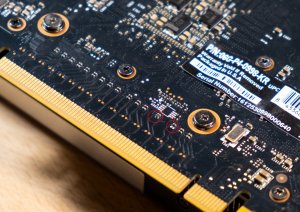
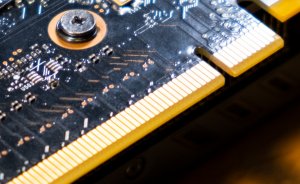
The card in question is an EVGA GeForce 980 Ti "Classified," a product of the uniquely famous Ilya 'TiN' Tsemenko and Vince 'Kingpin' Lucido duo at EVGA. This was one of the best iterations of the 980 Ti that you could get at the time, and as we'll see later, its very well made, with a lot of features aimed at overclockers (arguably the "real" hardware enthusiasts) that gamers shouldn't be that eager to pay extra for. It's similar to the Kingpin edition ("KPE" as Kingpin likes to call it), and you can see they're closely related if you look at them side by side. The KPE really goes ham with the overclocking features, whereas they appear to have been a bit more reasonable with this card. One thing I think is really neat about this card is that even now, when Nvidia has made it extra difficult, EVGA still really leans in to the extreme overclocker crowd, and not only employs TiN and Kingpin for the purpose of making special cards like this, but allows them to be accessible to the community in ways that none of the other board vendors do. MSI and Galax used to have similar product lines (called "Lightning" and "Hall of Fame" respectively), but it's really only EVGA that's still obviously putting in this much effort. Furthermore, TiN, at least, is a shockingly accessible person. He apparently owns and operates Xdevs.com, where he makes similar content to mine, and will sometimes respond if you reach out to him and ask a question.
Here's the card as it arrived. It clearly got used, as it's got some dust in the fans, and the heatsink fasteners show some evidence of having been removed at some point, but it doesn't appear to have been abused, or used for GPU mining in an outdoor shed or anything. Frankly, this is exactly what I would expect this card to look like at this point in its life, having been owned by the sort of person it's intended for. It even still has the peely-film on it.



The BIOS switch was in the liquid nitrogen mode when it arrived. Giggity.

Those headers are among the things that make this card special. The one on the left is what EVGA calls the "Probe-it" header, which consists of a series of voltage read points. With the exception of the 5V rail, every one of the voltage rails on the card is present there. There is a wiring harness that plugs into this; I'm not sure if it comes with the card, but we don't happen to have it. For our purposes, we can just probe the pins directly, so that's no biggie. For competitive overclocking, you'd want that wiring harness.
The other header is a connector for what EVGA calls an "EVBot," which is an external controller gizmo that allows real time control of the card's voltage rails. EVGA doesn't seem to make them anymore, but it has some advantages over using software that runs on the host system, and it's a cool feature that they include on this card.
A visual inspection of the card reveals a bit of physical damage here, near the PCI-E finger, where we can see we're missing a couple of 0402-size SMD capacitors. I don't know if this damage happened before or after the card was shipped to me. It seems likely that it may have happened before, as I've been pretty careful handling it, but I can't rule out the possibility that I did this. Fortunately, this is a pretty common thing, and should be relatively easy to fix. It might also help explain why the card doesn't work. Those little caps actually are critical, as they're in series with the PCI-E data lines. I've mused about this before, but I wonder if this sort of damage is one of the reasons that those metal shrouds are becoming common on newer cards. I bet the cost of including that is less than an RMA.


Last edited:
![[H]ard|Forum](/styles/hardforum/xenforo/logo_dark.png)
